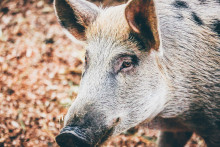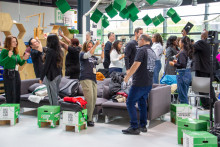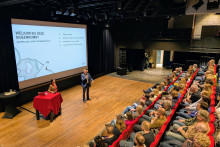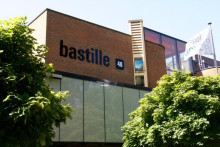The project focused on ‘spotting’ wild boar officially kicked off yesterday. Four students from various study programmes now have six weeks to find out if it’s possible to detect wild boar using drone imagery. The inquiry came directly from the Province as part of its long-term collaboration with the UT, explains Maya van den Berg, project manager at DesignLab which supervises the project in partnership with Province Overijssel and Space53.
Why search specifically for boars? ‘They are hard to spot, yet we know that their population is increasing,’ answers Van den Berg. ‘They are one of the largest animals we have in the region. They damage crops, which causes problems for farmers. The animals are only active at night and they move around a lot, but we need a better understanding of their behavior. This project also serves as a case study. If we are able to detect boars, drones could provide better monitoring of wildlife in general.’
'If we are able to detect boars, drones could provide better monitoring of wildlife in general'
The student team has members from different disciplines, including spatial engineering, creative technology and computer science. The students will be responsible for data gathering and analysis, while Space53 will supply and fly their drones. Experienced UT researchers are also involved as mentors, adds Van den Berg. ‘This type of research is already done at the university, especially at the ITC faculty, so there is no need for us to reinvent the wheel.’
There are still many unknowns, however. ‘It is not sure yet how we can spot boars on the drone images,’ says Van den Berg. ‘How can we best differentiate them from other animals? And will we be able to detect them automatically? It is all up to the students now.’ The results of the project will be presented in March.







